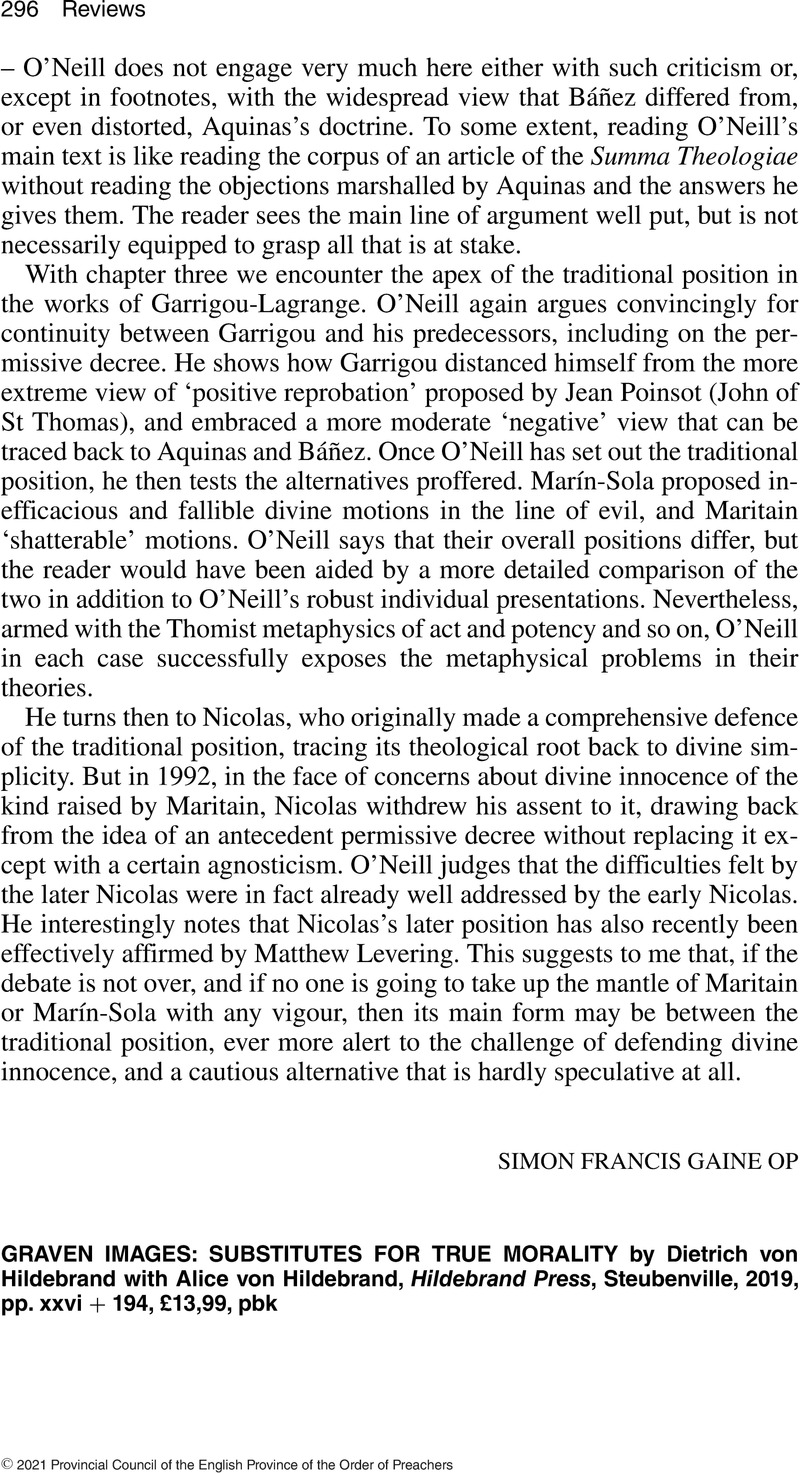No CrossRef data available.
Article contents
Graven Images: Substitutes for True Morality by Dietrich von Hildebrand with Alice von Hildebrand, Hildebrand Press, Steubenville, 2019, pp. xxvi + 194, £13,99, pbk - Morality and Situation Ethics by Dietrich von Hildebrand with Alice von Hildebrand, Hildebrand Press, Steubenville, 2019, pp. xxxix + 180, £13.99, pbk
Review products
Graven Images: Substitutes for True Morality by Dietrich von Hildebrand with Alice von Hildebrand, Hildebrand Press, Steubenville, 2019, pp. xxvi + 194, £13,99, pbk
Morality and Situation Ethics by Dietrich von Hildebrand with Alice von Hildebrand, Hildebrand Press, Steubenville, 2019, pp. xxxix + 180, £13.99, pbk
Published online by Cambridge University Press: 01 January 2024
Abstract
An abstract is not available for this content so a preview has been provided. Please use the Get access link above for information on how to access this content.

- Type
- Reviews
- Information
- Copyright
- Copyright © 2021 Provincial Council of the English Province of the Order of Preachers


